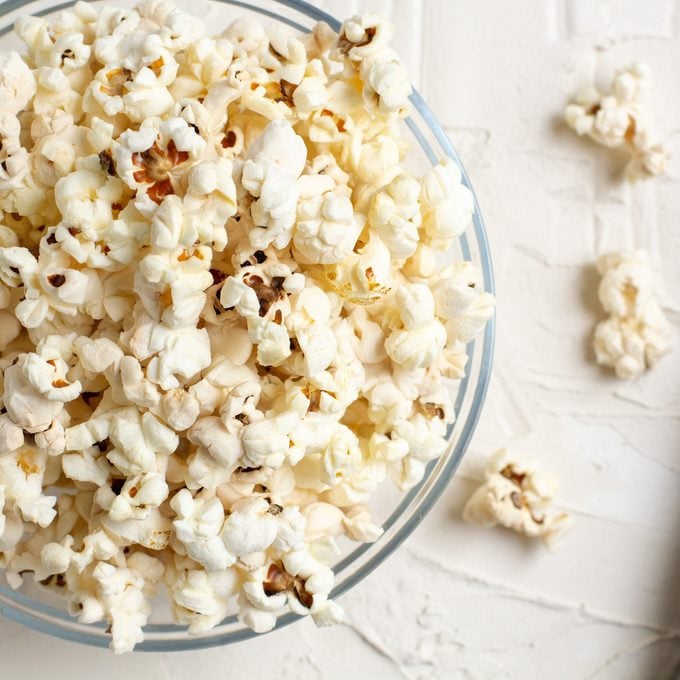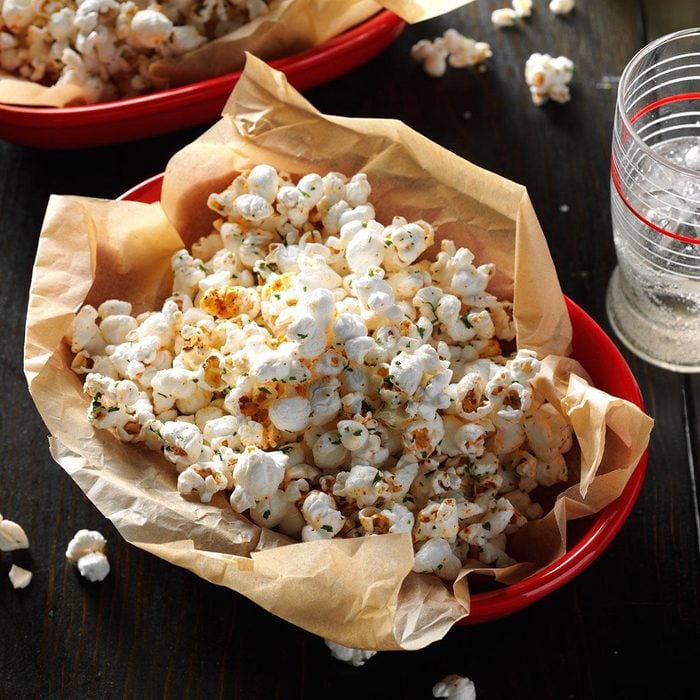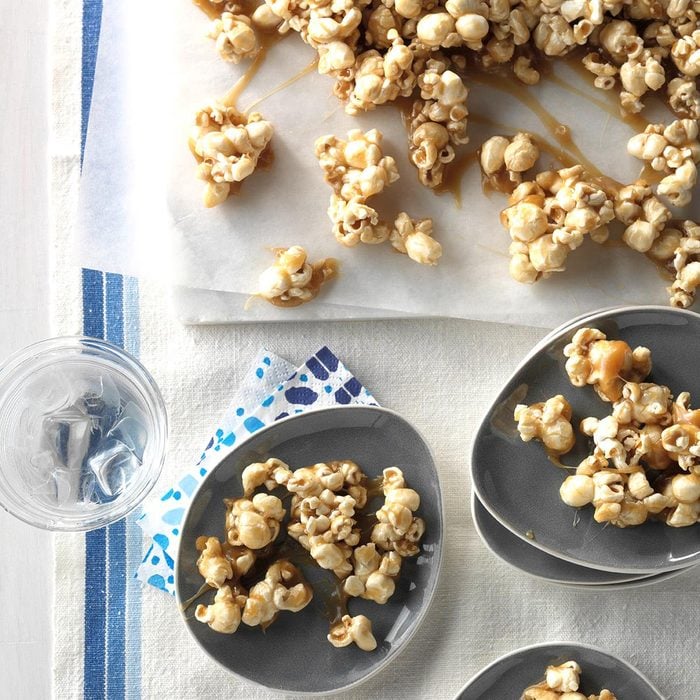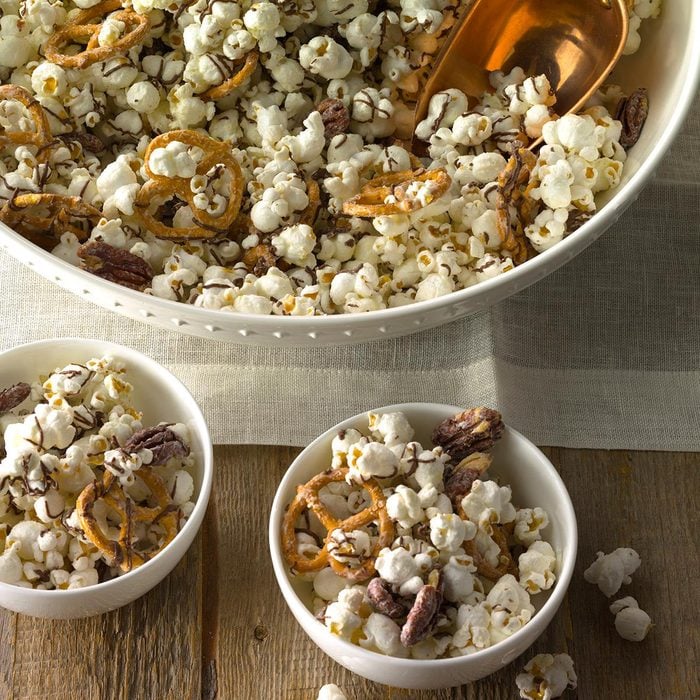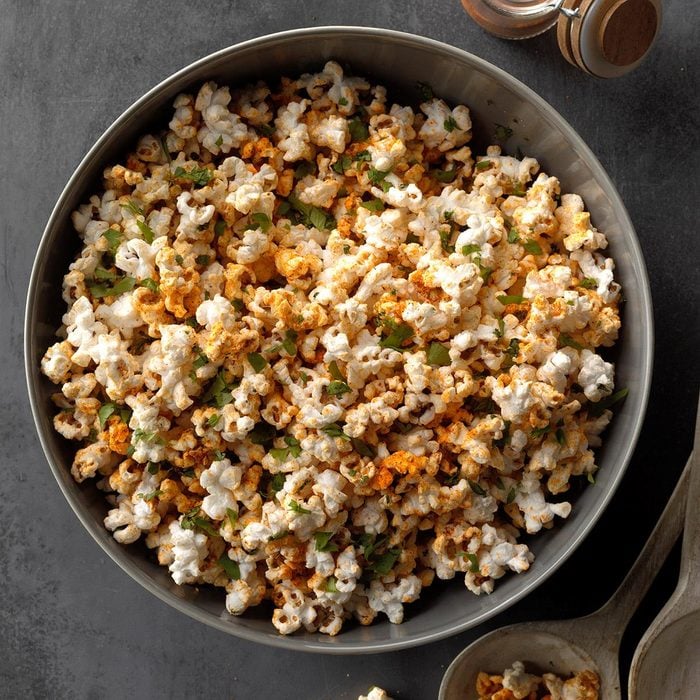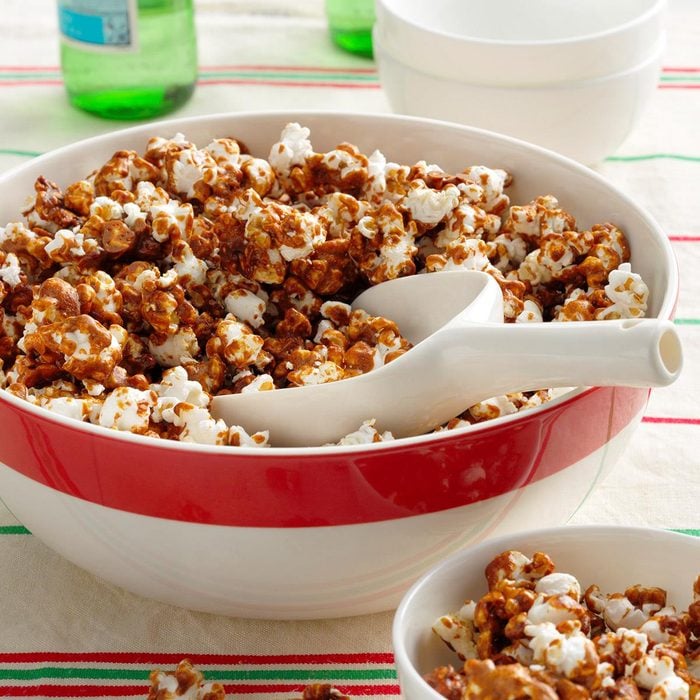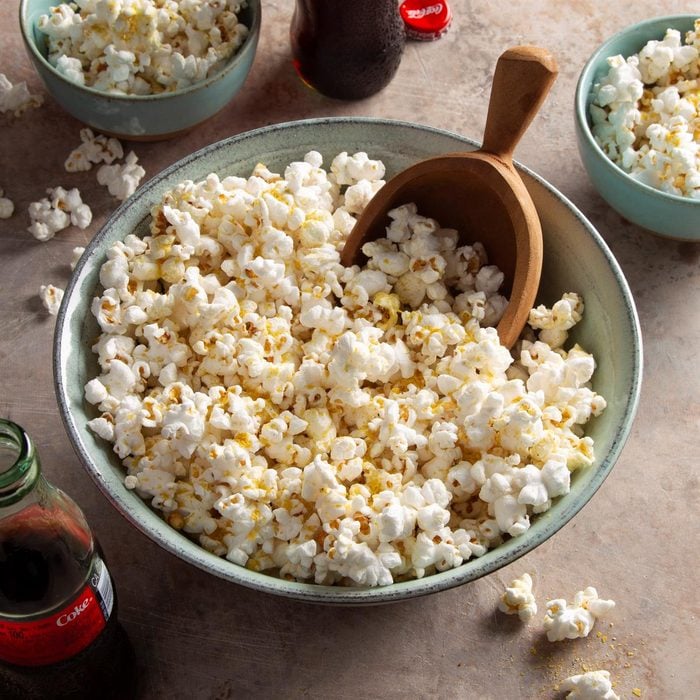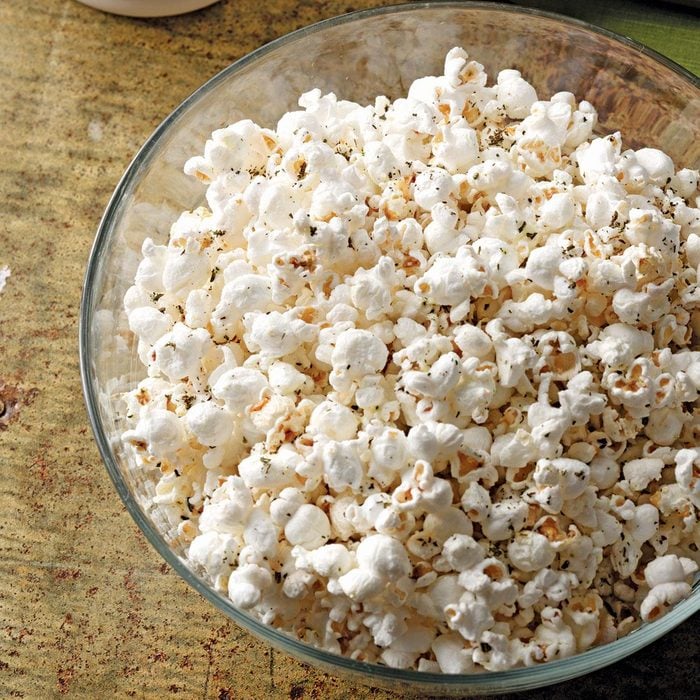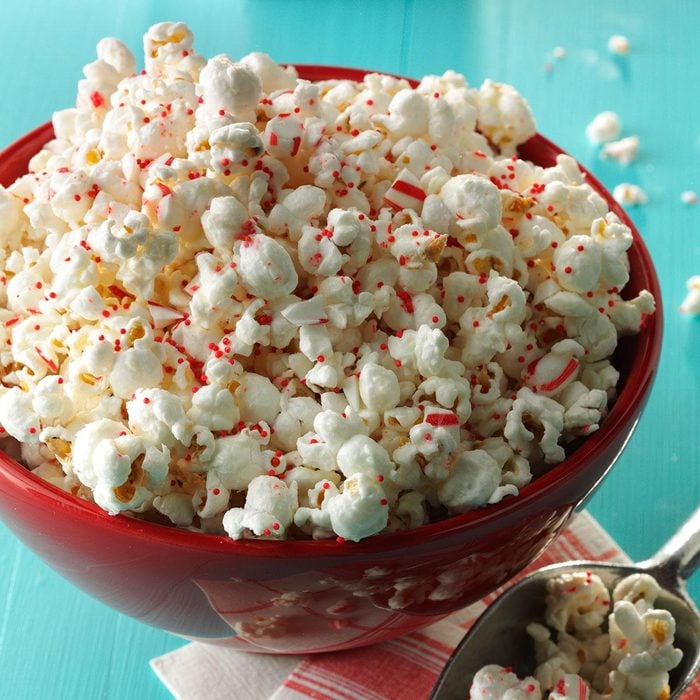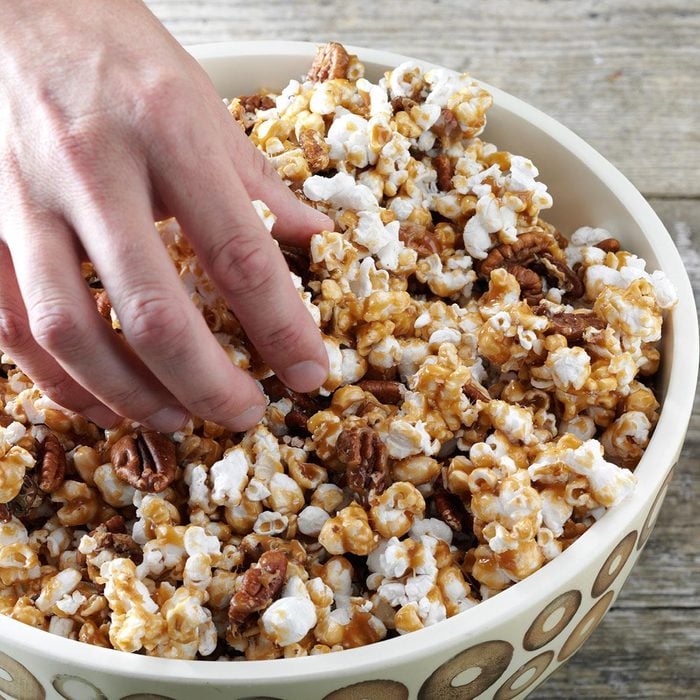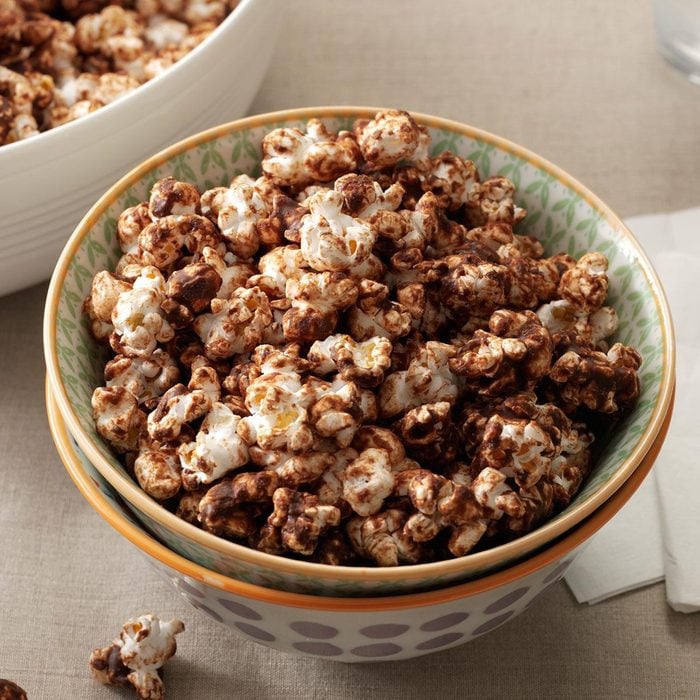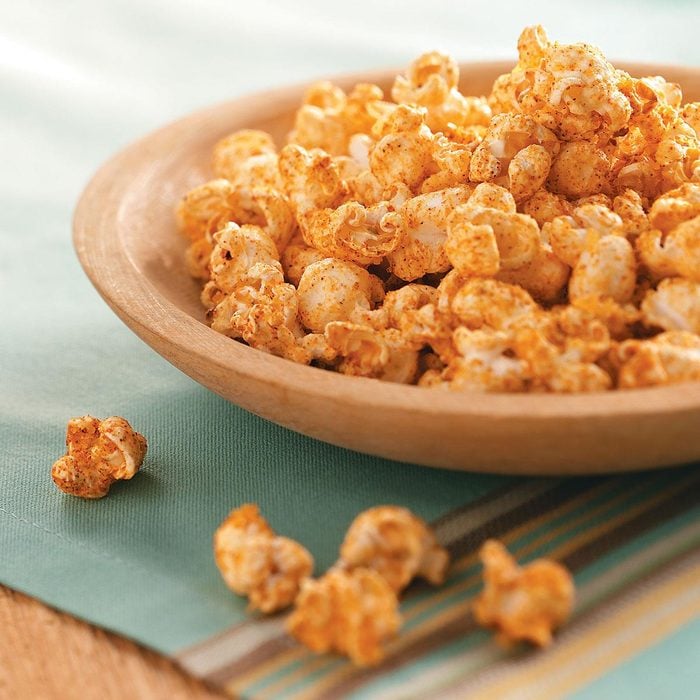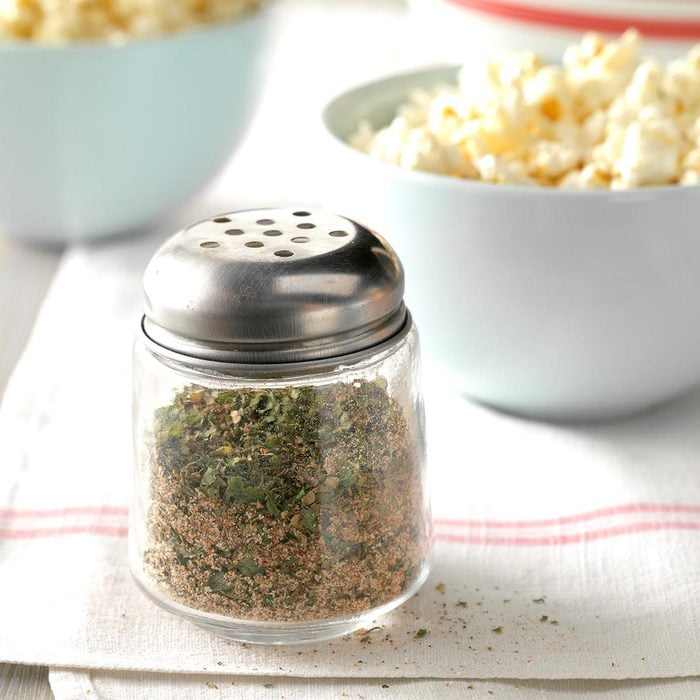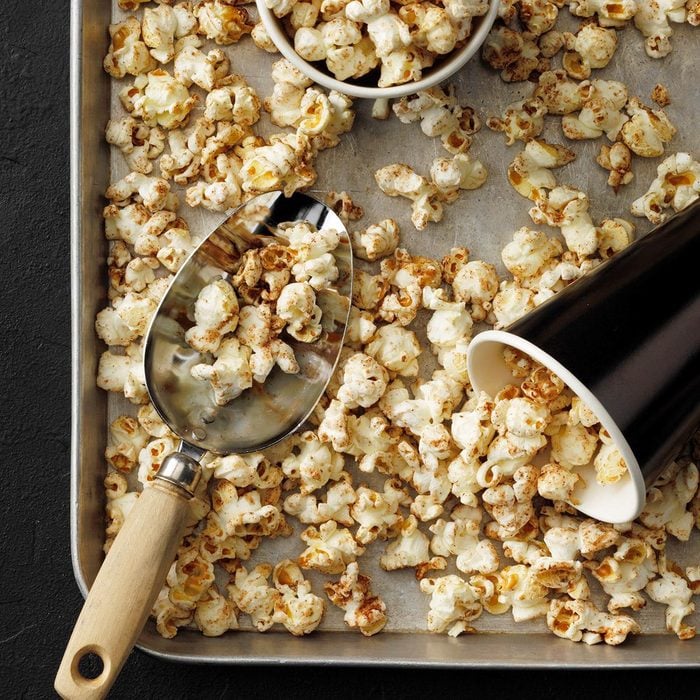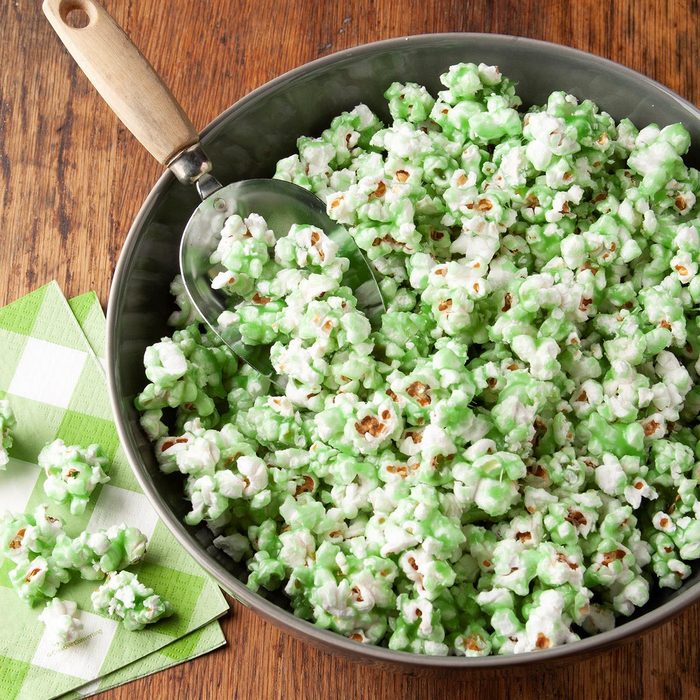How to Make the Best Popcorn
Updated: Mar. 09, 2022
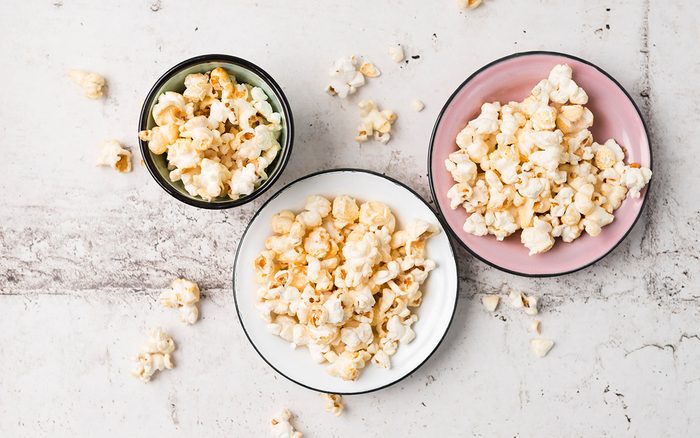
Put down the store-bought bag of microwave popcorn! You can learn to make the best homemade popcorn in an air popper, on the stovetop or in the microwave using loose popcorn kernels.
Growing up, microwave popcorn was the norm in my household. We’d pop it as an after school snack, or make multiple bags for family movie night. I didn’t realize that microwave popcorn wasn’t the only way to make it until I watched Drew Barrymore make stovetop popcorn in that iconic Scream scene!
Today, I don’t even own a microwave—my kitchen is too small to sacrifice the counter space—so I had to look for alternatives to store-bought bagged popcorn. At first, it seemed like it would be a lot of work, but it was easier than I thought. Loose popcorn is less expensive than the bagged brands, and I’m amazed at the quality difference. Each kernel is light and crunchy, and I no longer have to avoid those burnt bits at the bottom of the bag.
On This Page
What Is the Best Way to Cook Popcorn?
The key to creating the best popcorn is heating the kernels evenly. Try to pop them too fast, and the popped kernels may burn while others remain unpopped. Too slow, and the kernels shrink and shrivel, resulting in lackluster popcorn.
As far as method goes, you have three choices: in an air popper, on the stovetop or in the microwave. Which is best? Well, it really depends on your personal preferences. Air popped and microwave popcorn tends to be lighter and softer than stovetop popped popcorn, which is crunchier and gains a richer flavor from being popped in oil.
What Are the Best Popcorn Kernels for Homemade Popcorn?
For starters, you can’t use any corn for popcorn. Popcorn is one of three varieties of corn, along with sweet corn and dent or field corn. So don’t try to dry corn on the cob to make your own popcorn because it won’t work!
Then, there are several different types of popcorn kernels. The first consideration is color: popcorn is primarily white or yellow, although some artisan producers offer blue, red, purple or multi-colored. They mostly taste the same (especially after being drizzled with butter and salt), although some say that yellow popcorn is nuttier. These kernels come in a variety of sizes that affect the texture of the popped popcorn.
Finally, there are two different popcorn shapes: mushroom and butterfly (also known as “snowflake”). Butterfly popcorn is light and fluffy. It has an irregular shape with “wings” that make it an ideal choice when making classic or seasoned popcorn. Mushroom popcorn becomes round with a mushroom-like texture on the outside. It creates firm, strong popcorn that’s great for holding up to coatings like caramel corn.
It’s worth noting that while all popcorn varieties have a hull (the outer layer that holds the kernel together before it pops), some popcorn is “hulless.” These hulls are thinner, softer and easier to chew and digest. If getting popcorn stuck in your teeth is your least favorite part of the popcorn experience, go for a “hulless” variety.
The Best Oils to Use for Making Popcorn
Air popped popcorn and microwave popcorn don’t require any oil, but it’s important to use an oil with a high smoke point when making popcorn on the stove. When oil is heated past its designated target temperature, it starts to smoke, break down and become rancid. It’s not good for the smoke detector in your house, and it’s not good for your body, either.
Look to heart-healthy oils like safflower oil, rice bran oil, avocado oil or pure olive oil. You can also use high-temperature oils like peanut oil, ghee or lard when popping popcorn. If you want to add flavor with low-temperature oils like coconut oil or butter, we recommend adding them to the popcorn after it’s popped.
How to Make Popcorn 3 Ways
Making Air Popped Popcorn
Air popped popcorn is the type of popcorn you’ll get at the movie theater or a carnivals. At home, it’s considered one of the healthiest ways to make popcorn because it doesn’t require any oil. It uses a specialized appliance known as an air popper that circulates hot air around the kernels. When they pop, they’re forced out of the popping bowl and into a storage area where they’re ready for seasoning.
Interested in learning more? Check out our guide to learn how to make air popped popcorn.
Making Popcorn on the Stove
Stove-top popcorn is the most traditional way to make popcorn. It takes a little more effort than air popped or microwave popcorn, but this old-fashioned method produces some of our favorite popcorn because of its crunchy, rich-flavored kernels. We explore the process in-depth in our guide for making popcorn on the stove.
If you make a lot of popcorn, it’s worth investing in a lightweight popcorn popper with a vented lid and a crank to move the kernels around, like this Great Northern Popcorn Popper. Otherwise, any large, heavy-bottomed pot with a lid will work. Add two tablespoons of any oil with a high smoke point and 1/3 cup popcorn kernels to the pot and cover it with a lid. Using medium heat, cook the popcorn until the kernels start popping. Shake the pan to help the popcorn heat evenly for two to three minutes, until all the kernels have popped.
Making Popcorn in a Paper Bag
You can absolutely make microwave popcorn without using a bag of store-bought popcorn. This is a great way to skip all those added ingredients like salt, oil and chemical flavorings designed to taste like butter. As a bonus, it can be done in any paper bag or a reusable microwave popcorn maker, like this collapsible Cuisinart container. That’s good news if you’re worried about the perfluorinated compounds (PFCs) in store-bought popcorn bags.
We go into depth about how to make paper bag popcorn in our step-by-step guide, but here’s the process in a nutshell: Add between 1/4 to 1/2 cup of popcorn kernels to a paper bag. Fold the top over to trap the steam inside and microwave it on high heat for two to three minutes. Paper bags aren’t technically microwave safe, so don’t wander off while it’s popping, just in case.
Popcorn Tips
How to pop popcorn faster
It’s not a good idea to increase the heat on the stovetop to pop popcorn faster, as medium heat creates the perfect environment for large kernels. Instead, speed up the process by skipping the preheating step. Traditional recipes tell you to heat the oil with a single kernel in the pan. When it pops, add the remaining kernels and replace the lid. We haven’t found a difference in flavor or texture by adding all the kernels to the cold pan, so save yourself some time and go all-in in the beginning.
How to ensure the most kernels pop without burning the popcorn
The very best way to ensure most kernels pop is to invest in a lightweight aluminum pan with a crank, like the Whirley Pop. The crank keeps the unpopped kernels moving along the bottom of the pan and allows the popped popcorn to rise to the top, ensuring more popped kernels and fewer burnt ones.
An air popper is another great tool to prevent burnt popcorn. After the kernels pop, they’re forced out of the popper and into a storage area, where they no longer have access to the hot air.
What is the healthiest way to cook popcorn?
Popcorn is a low-fat, high-fiber, whole-grain food, so it’s naturally healthy. It becomes unhealthy when it’s doused in butter or oil. That amps up the flavor, but it also adds fat and calories. Try using a popcorn method that doesn’t require any oil, like an air popper or making popcorn in a paper bag, and using no-calorie seasonings like herbs and spices.
Why is my popcorn tough?
Popcorn can become tough and chewy if it’s trapped inside a container with steam. When making microwave popcorn, it’s best to open the bag immediately after popping to release the steam. On the stovetop, try using a dedicated popcorn maker with vented lids. With a regular pot, you can set the lid ajar to release some of the steam. Just be careful not to leave it so open that the popping kernels can escape!
What to Add to Popcorn for Flavor
There are tons of ways to create flavorful seasoned popcorn! Feel free to experiment with different combinations, adding seasoning and tossing the popcorn before tasting and adding more. You’ll want to add melted butter or oil to help the seasonings stick. To keep the popcorn oil-free, spritz the popcorn with water from a spray bottle.
Try combining Parmesan cheese, salt, dried oregano and garlic salt for a basic seasoned popcorn. You can always keep things vegan-friendly by using nutritional yeast instead of cheese, too. Or amp-up the savory vibes by adding dried basil, marjoram, thyme and parsley.
Don’t be afraid to add spice to your popcorn, like cayenne pepper, smoked paprika or ancho chile powder. You can also turn it into a sweet treat by adding powdered sugar or brown sugar to the popcorn along with warming spices like cinnamon, nutmeg or cloves.
For exotic flavors, use curry powder, Shichimi Togarashi, Chinese five spice, everything bagel seasoning or a packet of ranch seasoning. The possibilities are endless, so have some fun with it!

